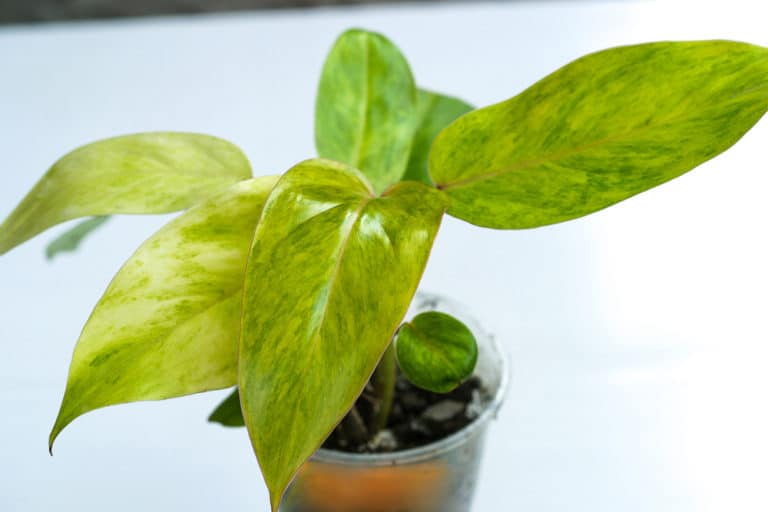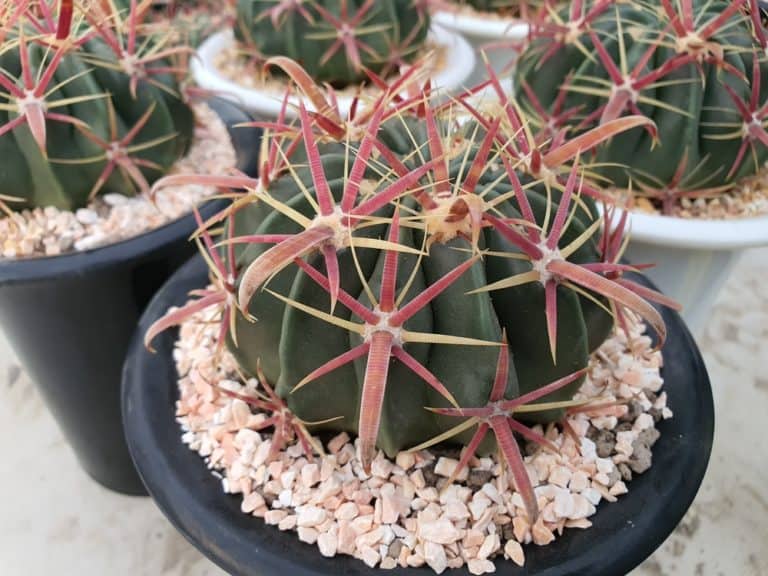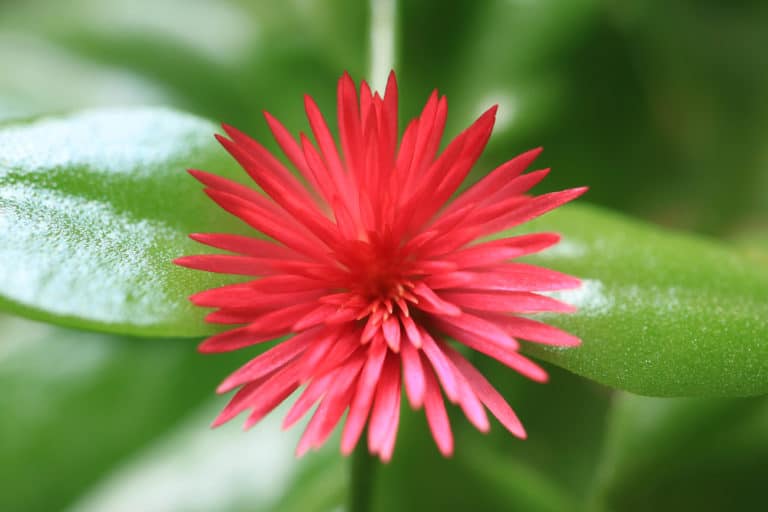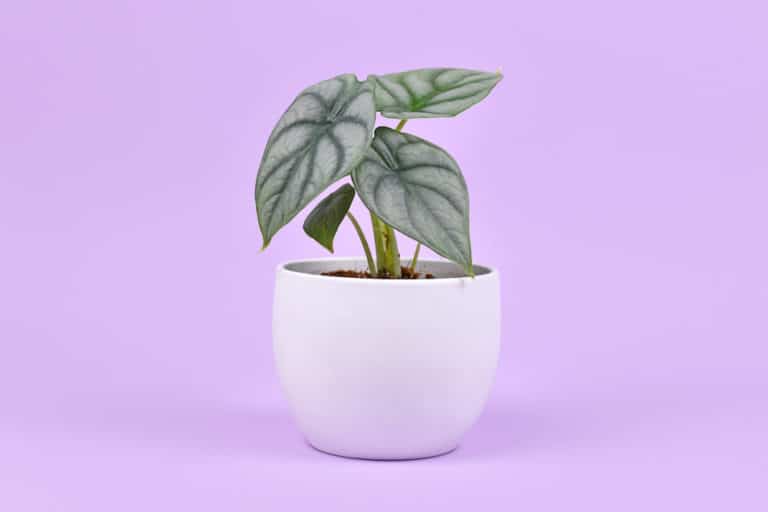Peperomia Polybotrya ‘Raindrop’ Care Guide (2024)

Raindrop Peperomia is a cute little tropical plant that is not only easy to grow but small enough to fit anywhere.
This rainforest native is a perfect fit for a terrarium.
Peperomia polybotrya has attractive evergreen leaves, and will also start blooming for you after a few years, adding to its general appeal.
| Scientific Name | Peperomia polybotrya |
| Common Name | Raindrop Peperomia |
| Light | Bright indirect sunlight |
| Watering | Water if the top 2 inches of soil are dry |
| Temperature | 65 to 80ºF (18 to 27ºC) |
| Hardiness Zone | 10 to 12 |
| Humidity | 60% |
| Soil Type | Rich, quick-draining, loamy |
| Soil pH | 6.0 to 6.6 (mildly acidic) |
| Fertilizing | A balanced feed once a month in spring and summer |
| Repotting | Every 2 to 3 years |
| Pruning | Beginning of the growing season |
| Propagation | Root in water or soil |
| Toxicity | Not toxic to humans and pets |
| Mature Size | 15 inches as a houseplant |
| Bloom Time | Year-round |
What’s Unique About Raindrop Peperomia?
The Raindrop Peperomia plant is native to the tropical rainforests of Colombia and Peru, and has been grown as a houseplant for many years.
Raindrop Peperomia plants are small enough, even at full size, to comfortably fit on a bathroom counter or on a desk, letting you have greenery wherever you want.
Growing Raindrop Peperomia is easy, too, making them a great first project for beginner indoor gardeners, including young children who want to grow something.
Not only is Raindrop Peperomia non-toxic to people and animals, but it also is one of the plants that can filter chemicals out of the air.
Raindrop Peperomia Care
Raindrop Peperomia originates in the tropical rainforests of South America, evolving in a humid, warm environment, where it thrives in the dappled shade.
In your home, Raindrop Peperomia plant care does not have to recreate those exact equatorial conditions, but good Peperomia polybotrya care should provide the essential elements for vigorous growth.
Light
These petite tropical plants can be found growing on the forest floor in their native rainforests.
They live far beneath the towering trees that form the canopy and filter the blazing equatorial sun.
As a consequence, Raindrop Peperomia light requirements are for bright but indirect light, or around 10,000 to 20,000 lux.
Usually, you can meet Peperomia polybotrya light needs without plant lights. However, if you’re growing it in a windowless office, or in a region where the winter hours of daylight are limited, that’s always an option.
Otherwise, keeping them in a north or east window, or out of the full sun in a room facing south or west should be sufficient.
Watering
Good Raindrop Peperomia watering means finding that delicate balance between soil that is too wet or too dry.
In the rainforest, Raindrop Peperomia is used to fairly constant soil moisture, but at the same time its native soil drains easily, so it’s never saturated.
In your home, water Peperomia polybotrya whenever the top inch or two of the soil has dried out. Gently pour tepid water across the entire surface, just enough to moisten it.
In the fall and winter, Raindrop Peperomia’s watering needs will drop off as it enters its dormant period. Don’t stick to a regular schedule, but rather check the soil moisture before adding more.
Temperature
The Raindrop Peperomia temperature range is pretty broad, as this plant will grow happily anywhere from 65 to 80ºF (18 to 27ºC).
Basically, any temperature at which you feel comfortable should be an adequate temperature for Peperomia polybotrya.
Your biggest concern should be exposing your Raindrop Peperomia to temperatures below that range, as it has limited low temperature tolerance. Even if your home is heated, cold drafts or frosty windows can cause serious damage to this tender tropical.
In hot weather, even the blast from an air conditioner can endanger its health.
Like all tropical plants, it has no frost hardiness, so it must not be exposed to freezing temperatures.
Humidity
It should come as no surprise that this native of the tropical rainforest thrives in high humidity.
The ideal humidity for Peperomia polybotrya is 60% or higher.
However, you will usually find that Raindrop Peperomia humidity requirements in your home can be met with a 40 to 50% humidity level.
If you want to give your Raindrop Peperomia an extra boost, putting it in your bathroom will naturally expose it to a steamy environment when you take your shower.
Because of their small size, Raindrop Peperomia plants are also a perfect fit for a terrarium. The enclosed microclimate will also provide higher humidity.
Soil
In the rainforest, Raindrop Peperomia grows in a spongy, damp soil high in organic matter, so aim for something similar.
Raindrop Peperomia soil should hold onto the moisture that it needs to grow, while at the same time draining away excess water.
You want a pH level for Peperomia polybotrya of 6.0 to 6.6, or mildly acidic.
A good commercial soil for Peperomia polybotrya is the readily available African Violet soil mix, as the requirements are similar for both plants.
Otherwise, just use a commercial potting soil, mixed with equal amounts of peat moss and perlite to improve drainage.
Fertilizer
Using fertilizer for Peperomia polybotrya will ensure the strong growth of healthy leaves, but more is definitely not better.
Too much fertilizer can hurt the delicate roots and result in damaged leaves.
The most reliable Raindrop Peperomia fertilizer is a liquid houseplant fertilizer with a
fertilizer ratio of 10-10-10. Dilute it to half the recommended strength.
Once a month in spring and summer, pour the fertilizer solution evenly over the soil surface, right after you’ve watered.
In fall and winter, fertilizing is not recommended.
If you see a white crust developing on the soil surface, salts from the fertilizer are accumulating. Flush them out by running a steady stream of water through the soil for about 10 minutes.
Potting & Repotting
Raindrop Peperomia repotting is necessary every two or three years on average, in early spring at the beginning of its growing season.
If you can see that your Raindrop Peperomia’s roots are starting to fill the current pot, go ahead and switch it to a larger pot size, but no more than an inch wider. Always use a pot with drainage holes.
Otherwise, repotting Peperomia polybotrya should be done every three years to replace the potting soil.
Raindrop Peperomia roots are very delicate, so take great care not to damage the roots when you are transferring them to their new pot.
Pruning
You will not need to do much Raindrop Peperomia pruning.
Since it grows slowly and will not get more than a foot or so tall, most of the time cutting Peperomia polybotrya involves simply snipping off dead or damaged leaves.
However, if your Raindrop Peperomia has gotten a little leggy or lopsided, you can trim off any straggly bits with a pair of sharp, sterilized scissors.
Cut right above a node, and new growth will branch off from there for a fuller look.
If you are lucky enough to have your Raindrop Peperomia bloom, snip off the flowers once they’ve started to die.
Propagation
Raindrop Peperomia propagation can be easily done.
The easiest way to propagate Peperomia polybotrya is by taking stem cuttings.
Cut just below a node, and put the stems in a jar of water or in a pot with moist soil. Cover them with a plastic bag or cloche made with a cut-off water jug to keep it warm and humid. Roots should develop within a month.
Another fun way to create new plants is using leaf cuttings.
Take a Raindrop Peperomia leaf, and cut it across the middle, either vertically or horizontally. Tuck the leaf, cut side down, into moist soil, and treat it like a stem cutting.
Within a couple of months, you should see several baby plants growing along each leaf. Simply snap them loose and plant them out.
Common Problems of Raindrop Peperomia
One of the great things about growing this little plant is that there are not many Raindrop Peperomia problems to worry about.
While you may encounter a few minor problems with Peperomia polybotrya, they’re usually easy to resolve.
Like with all foliage plants, the leaves of your Raindrop Peperomia will let you know when there’s something wrong, and give you clues on how to solve it.
Pests
There’s only a couple of common Raindrop Peperomia pests, and getting rid of them is pretty easy.
In fact, you can stop those bugs from turning up on your Peperomia polybotrya in the first place with a simple maintenance task.
Once a month, spray or wipe down the leaves with a solution such as insecticidal soap or neem oil.
Mealybugs can make your Raindrop Peperomia’s leaves wilt, so if you see signs of that, check the undersides of the leaves.
If you see white fluffy spots, simply wipe them off with a cotton ball soaked in rubbing alcohol.
The telltale signs of spider mites are little yellow bumps on the leaves, and sometimes sticky webs.
Just give your Raindrop Peperomia a nice shower in the sink to get rid of these bugs.
Diseases
Most Raindrop Peperomia diseases can be avoided by keeping the leaves of your Peperomia polybotrya dry and not overwatering, as damp conditions can foster disease.
Leaf spot can be one of several different fungal or bacterial diseases, causing lesions that can be black, brown, yellow, or a combination of colors.
Trim off any infected leaves, and repot your Raindrop Peperomia in fresh soil. An antifungal spray may be helpful.
Root rot is very likely when you overwater your Raindrop Peperomia, as it cannot tolerate sopping wet soil.
If leaves start to turn yellow, and the stems get mushy, check the roots. If some of them are turning black and smelly, you need to trim off all affected parts, and use a fresh pot and potting soil.
Growing Problems
Other growing problems aren’t caused by pests or disease, but rather less than ideal growing conditions for your sick plant. If you can fix that, your Raindrop Peperomia should be fine!
Leggy growth isn’t going to kill the plant, but it detracts from your Raindrop Peperomia’s normal good looks. It’s probably a result of inadequate light, leading the plant to stretch towards the brightest light.
Give it a good trim, and move it to a sunnier spot, still out of the direct rays, or rig up a grow light.
Crispy brown leaf edges usually indicate low humidity, so use a humidifier or pebble tray to increase the humidity level around it.
Toxicity of Raindrop Peperomia
Good news! Unlike so many tropical houseplants, Peperomia polybotrya is not toxic to people or animals.
Because of this lack of toxicity, you can use a Raindrop Peperomia plant anywhere in your home without worrying about potential medical emergencies.
However, you should still take some precautions to make sure that your Raindrop Peperomia is safe from the small members of your household.
For Humans
Raindrop Peperomia is not at all toxic to humans, so you don’t have to go to extraordinary measures to keep your children safe from exposure to it.
However, if you are using insecticides on your Raindrop Peperomia, it’s best to discourage children from handing the plant. Even if the solutions are organic, keep contact with them to a minimum.
You also don’t want clumsy kids damaging your Raindrop Peperomia, so try to keep it out of their reach.
As well, since so many plants are toxic to some degree, a general rule that plants are off-limits can be a wise move.
For Pets
Raindrop Peperomia is not toxic to pets, including cats, dogs, and rabbits.
However, cats and dogs are carnivores, so their digestive systems have not evolved to handle large amounts of vegetable matter.
If your cat or dog eats enough of the Raindrop Peperomia foliage, it could end up with a gastro-intestinal upset causing vomiting and diarrhea.
You won’t need to rush it to the vet, but you will end up cleaning up a lot of mess.
To avoid this unpleasantness, simply keep your Raindrop Peperomia in a spot they can’t reach, such as a shelf or mantel. This will also protect the plant from damage.
Raindrop Peperomia Appearance
The Raindrop Peperomia appearance is cute and perky.
Staying small, with relatively large leaves on stiff, erect stems, Raindrop Peperomia is a perfect plant for small spots such as desktops and counters.
Its flowers are an added delight, adding their perfume to the air when they bloom after a few years of growth.
Foliage
The foliage of Raindrop Peperomia is what gives this little tropical plant its name; each leaf has a rounded shape similar to a drop of rain.
Leaves grow to a full size of 3 to 4 inches long, each one growing at the tip of its own stiff stem or petiole.
The leaves have a thick, leathery texture and a glossy surface. Both the stems and leaves store water in a manner similar to succulent plants.
They are a rich emerald green on top, with a paler shade underneath.
Keep the leaves looking their best by wiping them down every month with a damp cloth.
Flowering
There is no real season for Raindrop Peperomia flowering; after a few years when your plant has reached its mature size, you may see it blooming throughout the year.
However, they are more likely to appear in spring and summer.
The Peperomia polybotrya flower appears on stems stretching up above the leaves.
Long, narrow spikes covered with clusters of tiny white flowers emerge, ending in a greenish tip.
They have a sweet fragrance.
After a few weeks of blooming the flowers will fade. Cut off the spent blooms to encourage more flowering and keep the Raindrop Peperomia looking its best.
Size and Growth
The compact size of Raindrop Peperomia means that it can be tucked almost anywhere, in even the smallest of spaces.
It will not grow any taller than 15 inches at most, although the most likely mature size is 12 inches.
It naturally forms a bushy shape and does not usually need to be pruned.
It has a slow growth rate, and can take 10 years to reach its full size.
Because it has thick, stiff stems, it rarely needs any support. At most, you might use a bamboo skewer or two if necessary. Rotate the pot a quarter turn weekly to keep it growing straight.
Raindrop Peperomia Fragrance
While the foliage of Raindrop Peperomia has no scent, you will detect a Raindrop Peperomia fragrance if and when the tiny white flowers bloom.
These flowers have a sweet scent which is sometimes quite strong, especially in an environment with warmer temperatures.
If you are sensitive to strong fragrances, or are growing your Raindrop Peperomia in a small space such as an office or studio apartment, it may be overwhelming.
In that case, you can simply remove the flowering spikes and let your Raindrop Peperomia concentrate on producing leaves.
However, a few weeks of sweet-scented blooms can be a pleasant addition to your indoor garden.
Suggested Uses for Raindrop Peperomia
Raindrop Peperomia is the ideal indoors houseplant that you can grow no matter how small your space is.
You can tuck a pot onto your bathroom counter, where it will revel in the extra humidity.
It’s also a perfect desktop plant, providing you with a spot of fresh green color during the workday.
While you can’t leave it outdoors year-round outside of the tropics, you can give it a couple of months of hot, humid weather on your patio.
No matter where you put it, your Raindrop Peperomia will be working to filter chemicals such as formaldehyde out of the air.
FAQ
What is Raindrop Peperomia?
Raindrop Peperomia is an evergreen tropical plant native to the rainforests of Colombia and Peru, commonly grown as a houseplant for its foliage and flowers.
How to identify Raindrop Peperomia?
The Raindrop Peperomia has deep green oval leaves with a pointed tip, 3 to 4 inches long, with a thick, leathery texture and glossy surface.
How to care for Raindrop Peperomia?
Raindrop Peperomia should be grown in a bright spot out of the full sun, in moist but porous soil, and kept in a warm, humid environment.
How to grow Raindrop Peperomia indoors?
Raindrop Peperomia can be grown indoors as a potted plant or in a terrarium. It should be kept in a warm location with bright, indirect light.
How to grow Raindrop Peperomia outdoors?
Raindrop Peperomia can be grown outdoors year-round in zones 10 to 12, or moved out to a balcony or patio for the summer months in temperate zones.
How fast does Raindrop Peperomia grow?
Raindrop Peperomia has a slow growth rate, and can take as long as ten years to reach its full size of one foot in height.
How tall does Raindrop Peperomia grow?
Raindrop Peperomia is a small potted plant; when it reaches its mature size it is only 12 to 15 inches high with a similar spread.
How to make Raindrop Peperomia grow faster?
Raindrop Peperomia will always grow slowly, but it grows best in warm or hot temperatures and as high humidity as possible. Extra fertilizer will harm it, not help.
How to stake Raindrop Peperomia?
Raindrop Peperomia does not need to be staked to maintain its upright shape, but if it is a bit floppy you can support it with a couple of bamboo skewers.
How to pot Raindrop Peperomia?
Raindrop Peperomia should be potted in porous soil that will maintain adequate moisture, in a pot with drainage holes. Be gentle when transplanting as its roots are delicate.
How to revive Raindrop Peperomia?
If your Raindrop Peperomia has dried out completely, soak the whole pot in a pail or sink full of tepid water until the soil is saturated.
Why is my Raindrop Peperomia dying?
Your Raindrop Peperomia may have a bacterial or fungal disease caused by overwatering. Cut off all affected parts and replant it in a new pot with fresh soil.
Why is my Raindrop Peperomia drooping?
Your Raindrop Peperomia may be drooping because it is too dry or too wet. Either give it a thorough watering or repot it in fresh, well-draining soil.
How cold can Raindrop Peperomia tolerate?
Raindrop Peperomia will not grow properly below 65ºF (18ºC), with the risk of foliage damage and stunted growth in drafts or near cold windows. Freezing temperatures will kill it.
How to get rid of pests on Raindrop Peperomia?
Raindrop Peperomia pests can be eliminated or prevented by wiping the leaves down regularly with an insecticidal solution such as neem oil or insecticidal soap.
Is Raindrop Peperomia toxic to cats?
No, Raindrop Peperomia is not toxic to cats. However, cats are carnivores and can have vomiting and diarrhea if they eat too much vegetative material.
Is Raindrop Peperomia toxic to dogs?
No, Raindrop Peperomia is not toxic to dogs. However, dogs are not able to digest much vegetable matter and may end up with a gastrointestinal upset if they eat it.
Is Raindrop Peperomia toxic to children?
No, Raindrop Peperomia is not toxic to children. However, they should not be exposed to any insecticides that you may be using on the leaves.
Is Raindrop Peperomia toxic to humans?
No, Raindrop Peperomia is not toxic to humans. You can handle the plant without any concerns about an allergic or toxic reaction to the foliage or sap.
Does Raindrop Peperomia have a scent?
Raindrop Peperomia flowers have a strong, sweet scent for the brief period that they are in bloom, but the foliage has no fragrance at all.






